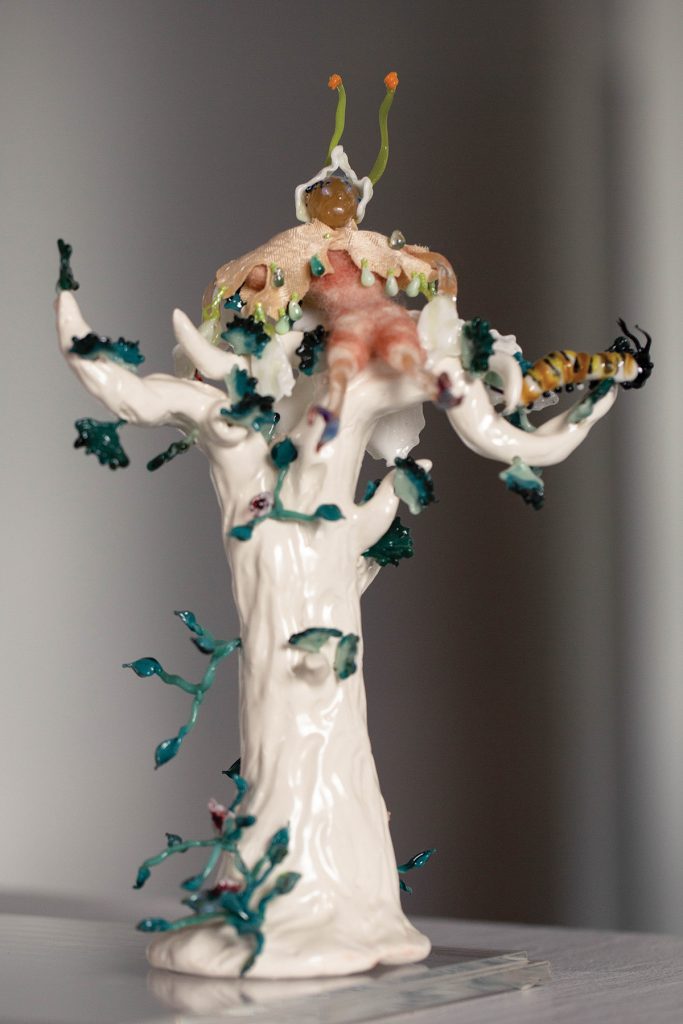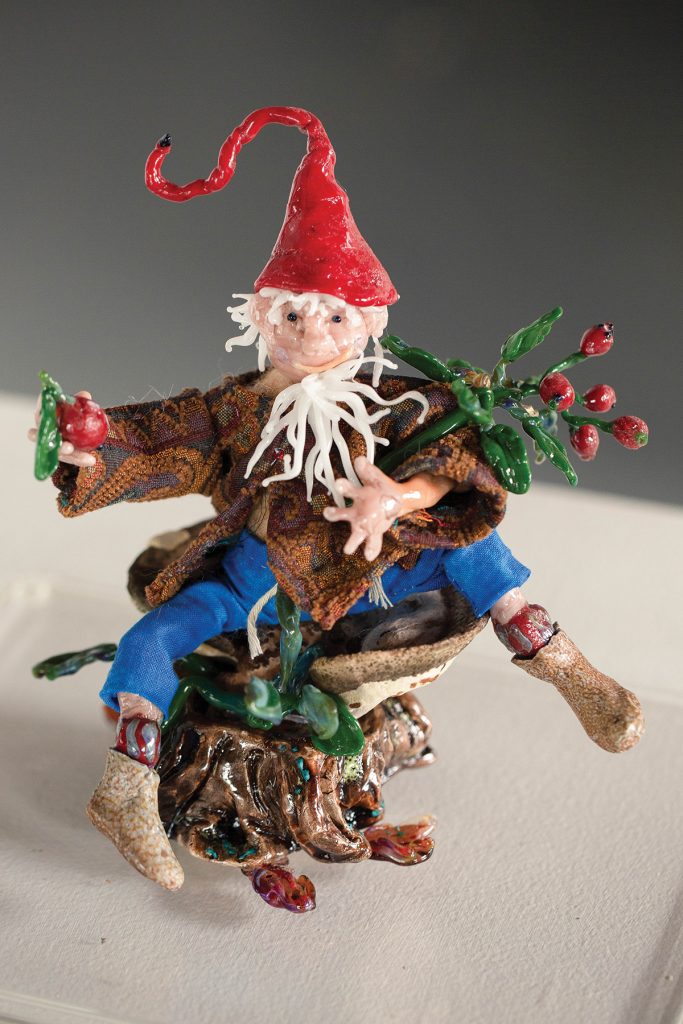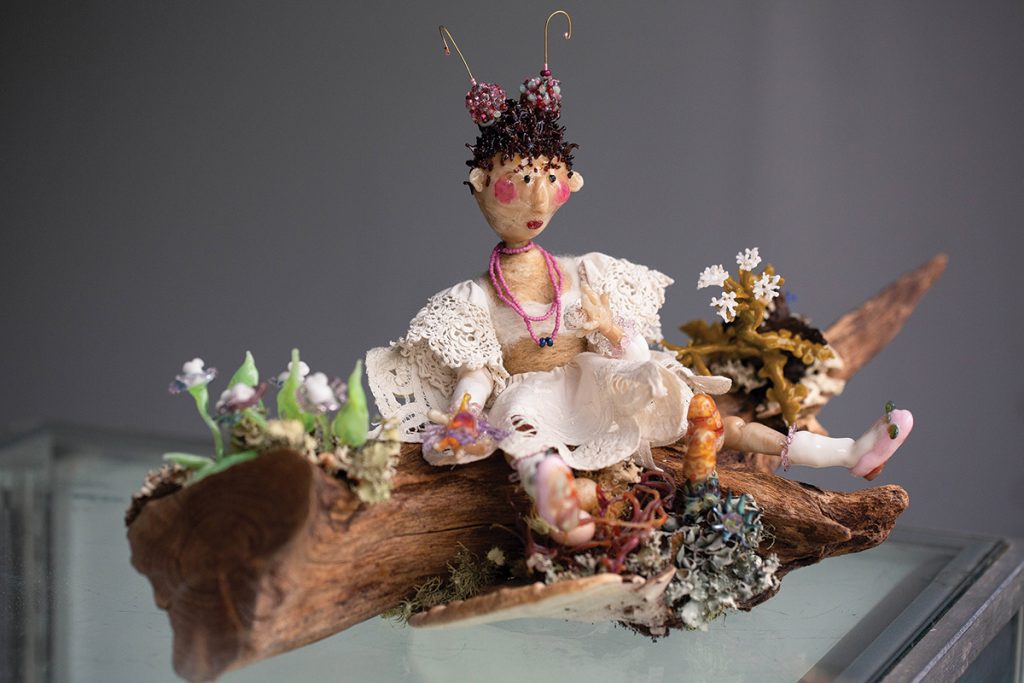
Photo by Colby Rabon
The magical creatures in Marti Svoboda-Sidelnick’s intricately composed glass pieces are real. After all, you can see and touch them. As the artist views it, they are merely “part of nature.”
Some of her fairies, gnomes, and sprites are solitary figures, while others expand into entire environments. Svoboda-Sidelnick transforms glass into small-scale ferns and grasses, trees and pixies. The physical attributes of the fantastical beings glass heads, gossamer fairy wings, antennae, tympana often give them the appearance of yet-to-be discovered exotic orchids, and allow them to blend into their surroundings in a way that camouflages them at first glance. But a closer look reveals them in all their surprising charm, in a way that may be sufficiently enchanting to convert, or at least entice, a nonbeliever.

Photo by Colby Rabon
Svodboda-Sidelnick attended Purdue to study mathematics, tested into a computer-oriented class, was the only girl in the class, and hated it. “So I switched majors to take art, and my parents weren’t happy.” After graduating, she realized she wanted to teach — and taught kindergarten through fifth grade for the next 25 years, including at North Buncombe Elementary. “Sometimes I hear from my former students who are still pursuing art,” she says, “and I love that.” After she retired, she still felt the urge to teach, so she went on volunteering. Then, in 2003, her husband gave her glassblowing classes for Mother’s Day.

Photo by Colby Rabon
“I found a new passion,” she says. The following year, she attended workshops at Penland School of Craft to refine her skills, which she currently hones at NC Glass Center.
For her flamework, Svoboda-Sidelnick uses a large torch, despite how tiny and intricate her figures are, because she prefers borosilicate glass that has a high-temperature melting point. Borosilicate — the same glass used in scientific laboratories — is also extremely durable and shock resistant. While Svoboda-Sidelnick’s little creatures may appear fragile and dainty, the natural powers they embody are strong.

Photo by Colby Rabon
And, too, “I like borosilicate because it’s more forgiving,” says the artist. “It has a longer working time because it doesn’t cool as fast as other kinds of glass where you have to work really fast,” she explains. “I can work on a piece, put it down, and come back to it later. The hardest part is putting the tiny flower petals together without having a torch accident where you hit the middle of the petal and crack it.”

Photo by Colby Rabon
She also incorporates a variety of other media. A glass figure’s parts are connected with needle-felted wool. Driftwood meets moss and lichen. Burls are juxtaposed with grasses; acorns and seedpods appear. Clay also plays a role, in a nod to Svoboda-Sidelnick’s childhood adventures in art.

Photo by Colby Rabon
“I took painting lessons as a young kid at the community center, and would paint ceramic angels and things.” She was so young that if she wanted to write on a piece — like inscribing the words “To Mother” — she would have to ask her teacher to do the writing.

Photo by Colby Rabon
A detour here and there notwithstanding, growing up didn’t change her true direction. Not at all — “You can find fairies everywhere, if you believe in them,” she says.
Marti Svoboda-Sidelnick, Asheville. The artist’s work will be on display through Sunday, June 19, in the D Space Gallery of the North Carolina Glass Center (140 Roberts St.) as part of the group exhibit Floralia. For more information, see ncglasscenter.org.